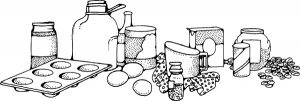
April 2021

He is not here; He has risen, just as He said.
Matthew 28:6

National Gardening Day: April 14th

National Gardening Day on April 14, is a day of encouragement, a day created to give gardeners a shove and a shovel so that they can begin their gardening journey. Weather permitting, gardening has always been an endearing task for patient lovers of the great outdoors. A good gardener plans years ahead as they shape the nature that surrounds them according to their vision and needs. With National Gardening Day arriving during Spring, it’s a great chance for you to warm up your green fingers and get planting and preparing for the summer. Our gardens are a unique space, use this day to get out there and make the most of them.



Taxes are due Monday, May 17th

Are you like Maxine? Are you in that 1%?
Don’t be like Maxine!

Administrative Professionals day will be observed on Wednesday, April 21. It was once known as Secretaries Day, and it’s a more-or-less unofficial holiday set aside to celebrate the value of secretaries, administrative assistants, receptionists, and other administrative support professionals. Be sure to thank them for their hard work!
April 30th: Plant A Tree


Key Lime Pie Energy Bars

INGREDIENTS
• 20 pitted deglet dates (or 10 medjool dates, pitted)
• 3/4 cup whole almonds
• 3/4 cup raw cashews
• 1/4 cup unsweetened shredded coconut
• Zest of 2 limes
• Juice of 1 lime
• Pinch of sea salt
INSTRUCTIONS
1. Place all ingredients into the bowl of a food processor.
2. Process until mixture is crumbly yet still holds together well when
pinched between your fingers. If mixture is too dry, add another date
and process again or add a splash of water. If mixture is too wet, add a
few more nuts and process again until crumbly.
3. Press mixture onto a parchment paper-lined baking sheet forming a
square about 9 x 9 inches (or roll them between your hands to form
them into 16 balls). Place bars in the fridge to chill if they seem sticky.
4. Cut into 12 bars. Wrap in parchment paper and store in a covered
container in the fridge for up to 1 week.
Total Time (Cook and Prep):
30 minutes
Servings: 16 balls or 12 bars

Deglet Noor Dates are from the date palm known botanically as Phoenix dactylifera. Of the three classifications of dates; dry, semi-dry and soft, Deglet Noor are of the semi-dry type. They are slightly crunchy yet still pliable and considered the most popular date in the United States.
